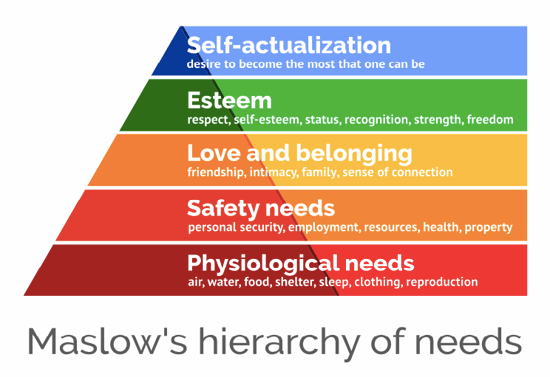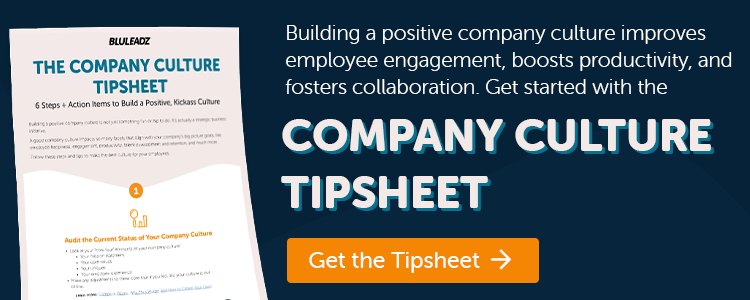A motivated workforce is your best asset, hands down. When you get your employees engaged in their day to day and excited about their responsibilities, your team can be unstoppable.
But employee motivation doesn’t just happen on its own. Through different talent management initiatives, you can foster a supportive culture.
When you can inspire your team and keep them motivated, you yield many advantages.
- You can foster commitment from your A players.
- You can boost employee satisfaction.
- You can set employees up to be more efficient.
- You can facilitate self-development for each individual.
One of the best ways to keep employees motivated is through employee incentive programs.
Why You Need Incentive Programs for Employees
Your staff is made up of human beings who have basic needs, which you can get a better understand of by looking at Maslow’s Hierarchy of Needs.

By providing incentives, you’re fulfilling needs in the top three segments of the hierarchy. You’re creating a sense of connection within your teams by rallying them toward common goals and building their self-esteem.
Incentives also help them pursue self-actualization, that feeling of becoming their best version of themselves. And when employees are being their best selves, your company as a whole is maximizing its value.
How to Make Your Program Actually Work
To make employee incentive programs work, you should be aligning incentives with higher concerns your staff faces. These concerns center on managing work-life balance, building positive relationships with coworkers, and pursuing work that gives them a sense of purpose.
You also want to avoid the unintended, negative consequences that can stem from incentive programs. For example, if you’re setting big goals to stoke a friendly competition, that competition can slowly evolve into an unhealthy sense of competition that might sour coworker relationships.
Plus, you need to be mindful of what you’re rewarding. If your employees are being rewarding for the things within their control, mainly their work ethic and actions they take, then that shows a direct correlation between dedication and reward.
But if you’re rewarding employees who are simply getting lucky or who aren’t contributing but taking credit, this can send a bad message to the rest of the team.
Bottom line: You need to be strategic in how you motivate employees.
25 Employee Incentive Ideas
There are many different ways to incentivize employee performance, all of which fall under two kinds of rewards:
- Monetary Incentives – These are tied to money in some way, like bonuses, cash rewards, and profit sharing plans.
- Non-Monetary Incentives – These are associated with other needs outside of financial wellness, including rewards like professional development courses and remote work opportunities.
The possibilities for these incentives are practically endless. The best part about rewards – you can spend as much or as little as you want to on them. Sometimes a simple “thank you” is all employees need to hear.
Here are a few of the most common effective incentives you can offer through your program:
- Subscription to a music streaming service (e.g., Spotify, Tidal, etc.)
- Donation to charity of their choice
- A ticket to an upcoming conference or seminar that aligns with their career
- Gift cards to their favorite store or ecommerce site
- Personalized items, like shirts, mugs, etc.
- Food items, like fresh cookies or a meal from their favorite restaurant
- Book of the month club membership (for your avid reader types)
- Branded items of clothing that showcase your company name and logo
- Access to professional development online courses and certifications
- Subscription to wellness apps (e.g., Headspace, Calm, ClassPass, etc.)
- Membership to the local health club or gym
- Access to cooking classes
- Credits for commute expenses (e.g., rideshare gift cards, public transportation reimbursement, etc.)
- Tickets to concerts, festivals, or sports games
- An all expenses paid vacation
- Lessons associated with their hobbies (e.g., guitar lessons, sewing classes, etc.)
- A spa day
- Vouchers for personal trainers
- Annual pass for U.S. National Parks
- Catered meals at the office or offsite at their favorite restaurant
- Housekeeping services (e.g., free laundry services, house cleaning, dry cleaning, etc.)
- Credits for car maintenance (e.g., oil changes, car washes, etc.)
- Wall of fame highlighting top performers
- Office party dedicated to an individual or a team
- Personalized funny awards (e.g., themed trophies, knickknacks, etc.)
With these rewards in mind, you’re ready to actually develop your program.
5 Steps for Building Your Employee Incentive Program
Follow these simple steps to take your incentive program from concept to reality.
1. Set Goals for Your Program.
Start by establishing the purpose behind your program. Want do you want to accomplish with your incentive program? How will you measure success?
Identify those KPIs, like employee net promoter scores (NPS), employee absenteeism, turnover rates, etc. When you have metrics to track, you can see the impact of your incentives.
2. Establish Incentive Plans for Individuals and Teams.
You can build your program around rewarding individual employees or teams of people (or both). How you reward your staff depends on what specific goals you want to set for your staff (more on this in step four).
3. Create a Bank of Rewards and Promote Them to Your Staff.
Build a budget and list out the incentives you're offering up for your workforce. These should be diverse to keep your program interesting.
Some employees might be more interested in baseball game tickets than a book of the month club, so give them options.
Once you have this list of rewards, promote them internally! Get people excited to go above and beyond so they can earn incentives that are meaningful to them.
4. Document Program Rules and Share Them.
Lay out the rules of your program within an official document that you can share with your teams. Be clear about what employees need to accomplish in order to earn specific rewards.
You might even have tiered rewards. For example, if your sales reps hit a lower revenue goal, they can get an Apple Music subscription, and if they hit a bigger revenue goal, they earn a voucher for vacation flights.
5. Seek Feedback on an Ongoing Basis.
As you roll your employee incentive program out, check in with your staff. Ask for their feedback to gauge how effective the incentives are in motivating them to take action.
They can shed light on what rewards truly inspire them and give you new ideas for more engaging incentives.
Start Incentivizing Performance Now
The carrot and the stick approach applies to how you inspire your staff. And with a structured, documented program, you can make employees feel valued and inspired.
More importantly, you can guide them to being their best selves in their personal and professional life.


Jeff Previte
I am a Content Manager at Bluleadz. I enjoy spending time outdoors -- camping, hiking, hammocking, and everything in between. I also love reading, writing, and learning how to play guitar.